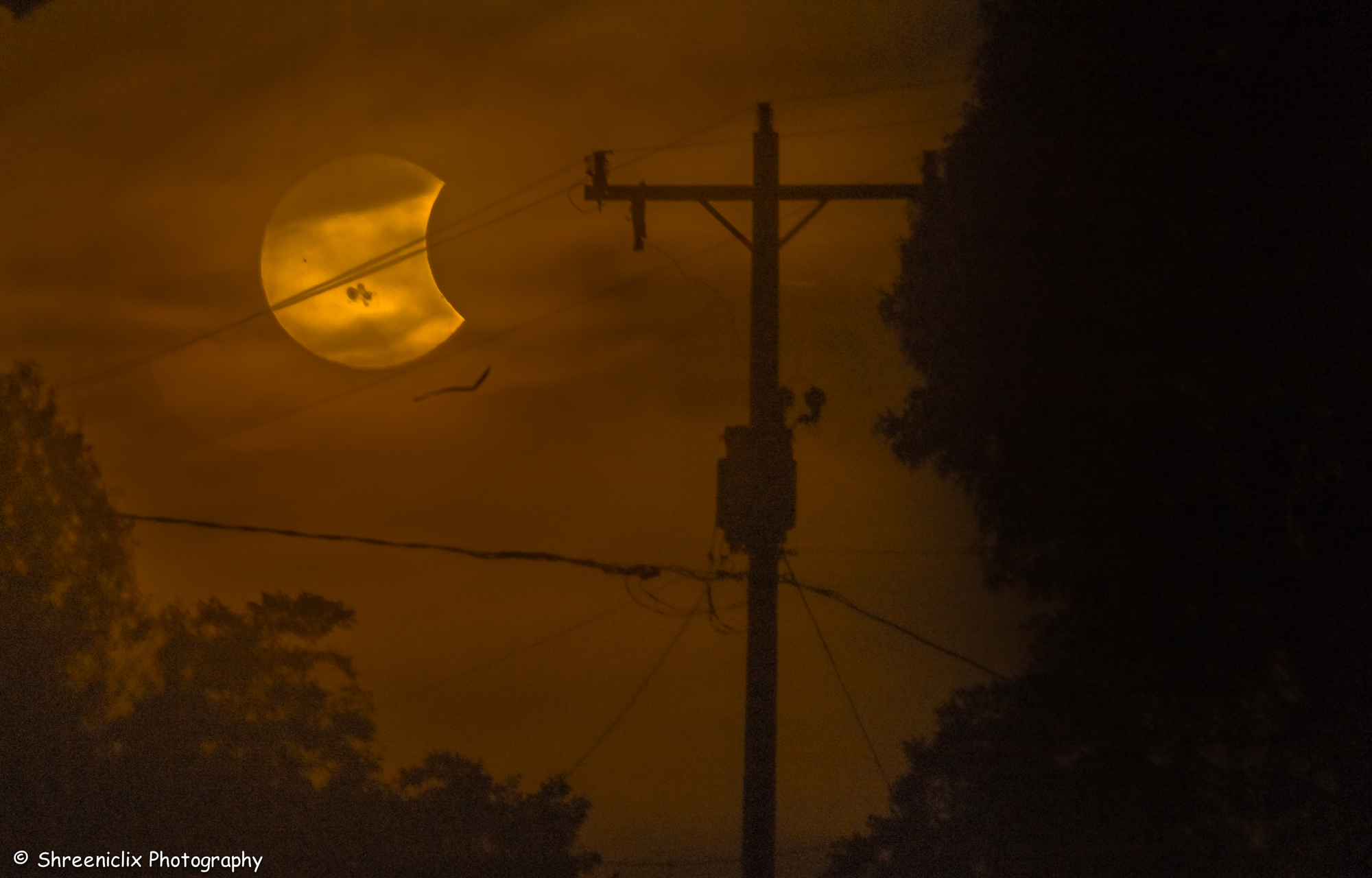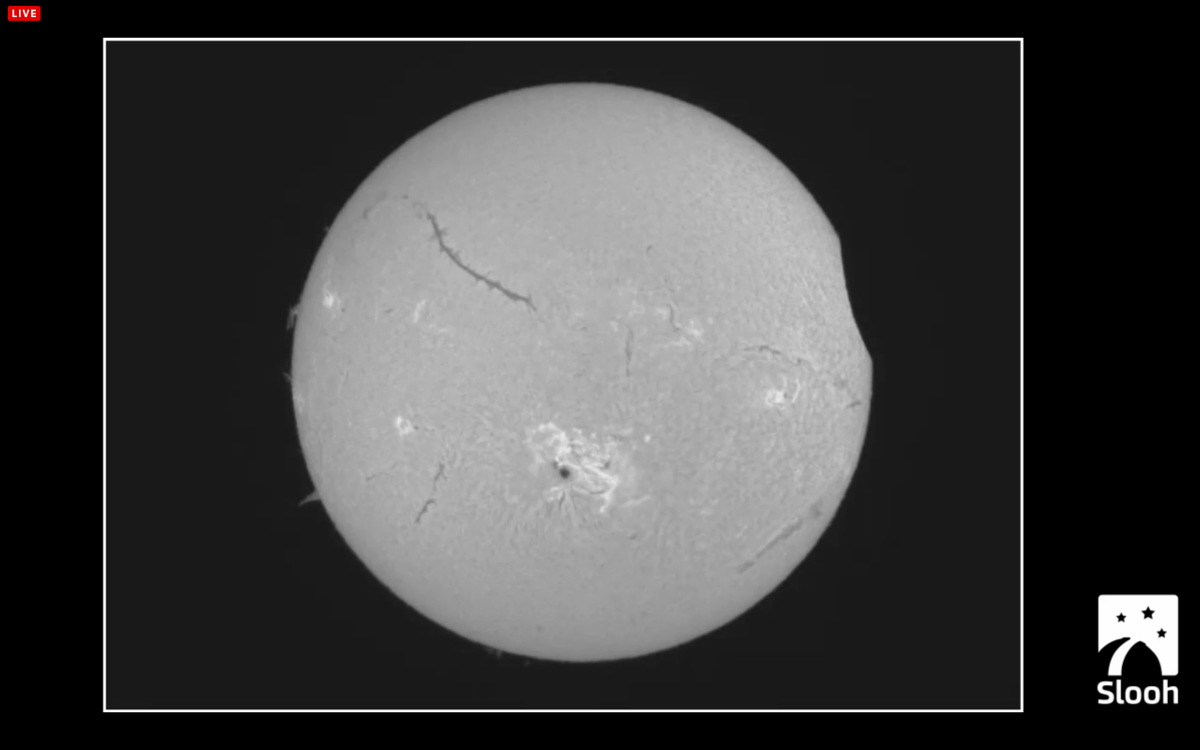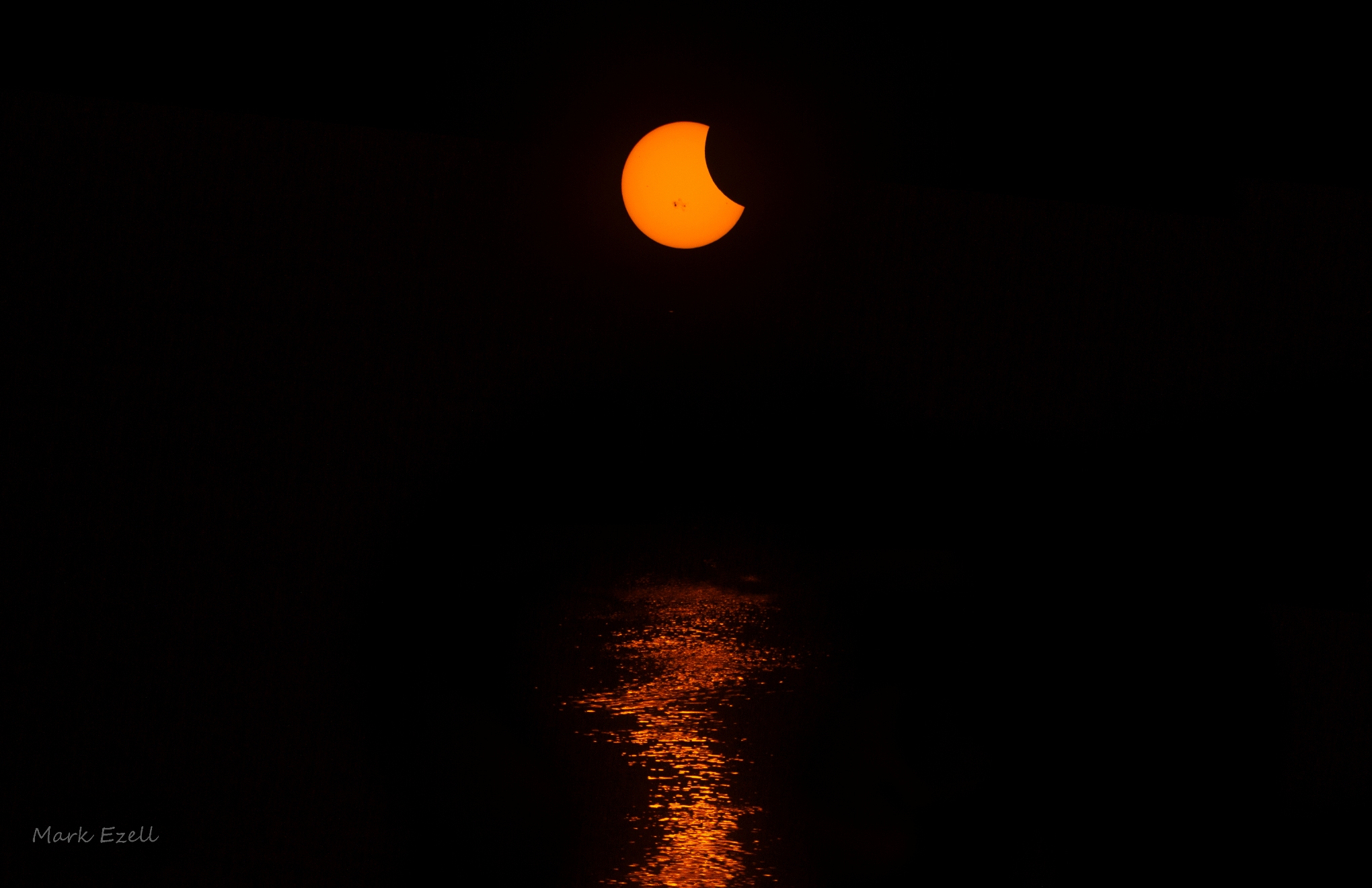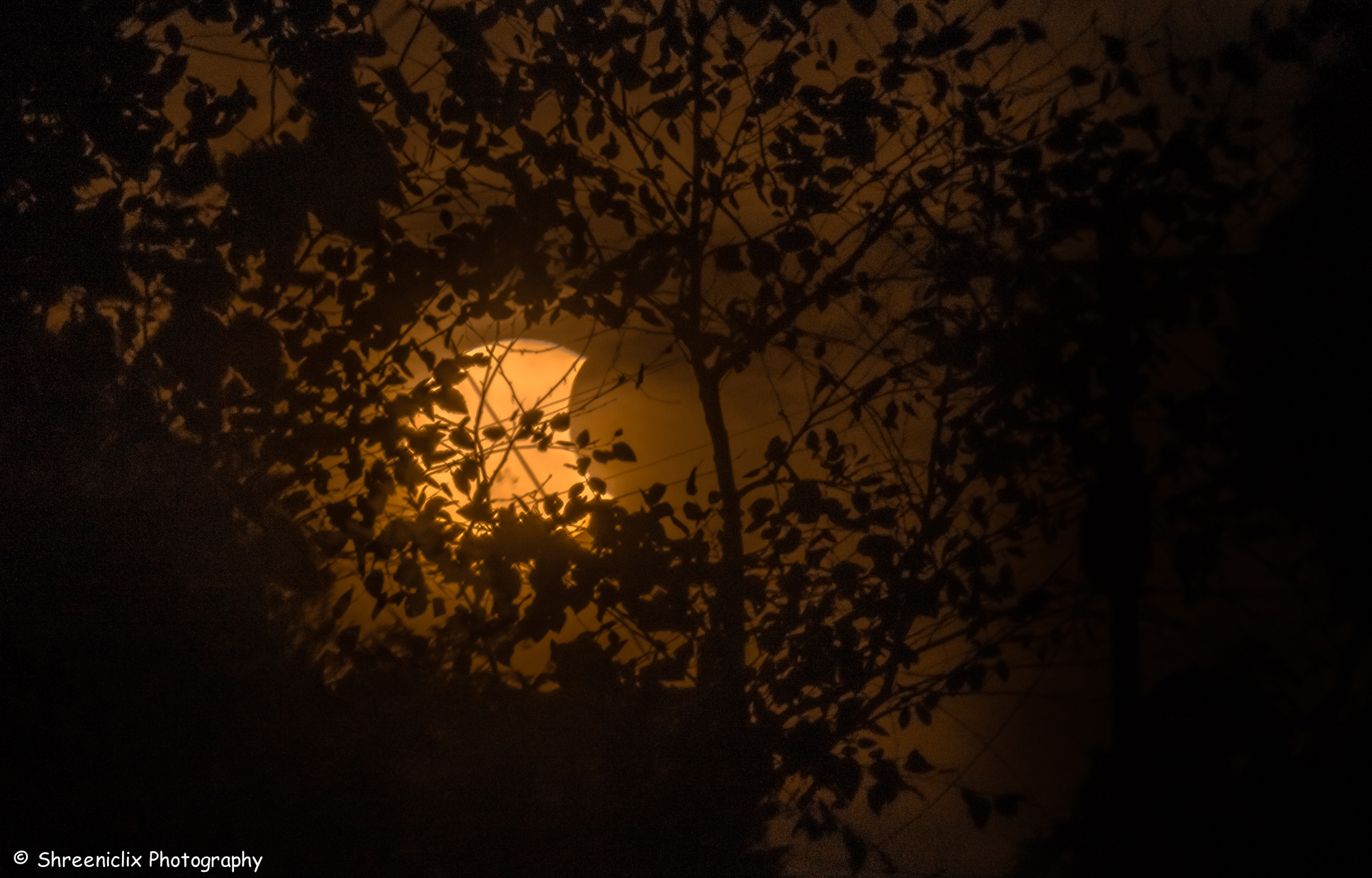Partial Solar Eclipse Wows Skywatchers Across North America (Photos, Video)
The moon appeared to take a bite out of the sun on Thursday (Oct. 23) in a partial solar eclipse that was visible to potentially millions of skywatchers across North America, weather permitting.
While the October solar eclipse was obscured by clouds in New York City, the home of Space.com, people in other parts of the world still got a good look at the cosmic wonder. The eclipse lasted about three hours, with nearly all of North America having a good view of the event. Viewers in the Canadian Arctic saw the "greatest eclipse," where the moon obscured 80 percent of the sun.
"The sun never fails to be boring," astronomer Lucie Green said during a Slooh Community Observatory webcast of the solar eclipse. "It's always got something to look at. It's always doing something new. We're always discovering new things about it." [See amazing images of the Oct. 23 partial solar eclipse]

Slooh.com hosted a feed of the solar eclipse from a solar telescope in Arizona. The telescope managed to image a huge sunspot that has recently been shooting out solar flares. The Griffith Observatory in Los Angeles, California, and the University of Arizona's SkyCenter atop Mount Lemmon also caught sight of the sunspot during their own webcasts.

"It's one of the largest sunspot groups we've had in years, and it's right smack in the middle of the sun," Slooh astronomer Bob Berman said during the webcast.
The Griffith Observatory, like many observatories across the U.S. and Canada, held a free public viewing of the solar eclipse. A huge crowd was expected at the iconic Los Angeles observatory, where dozens of solar telescopes were available for viewing. During the event, the observatory heralded the start of the eclipse with a performance by the University of Southern California's Trumpet Quartet (they played the "Triumphal March" from "Aida"), and capped the day with a suprise performance by the singer Donovan, who sang - appropriately - the tune "Sunshine Superman."

Meanwhile, skywatchers and photographers across the United States flooded Space.com's submission box with amazing photos of the solar eclipse.
Get the Space.com Newsletter
Breaking space news, the latest updates on rocket launches, skywatching events and more!
In Austin, Texas, skywatcher Mark Ezell captured views of the solar eclipse near the city's downtown district and Lady Bird Lake.
"This was my first time photographing a solar eclipse and I was thrilled to capture the sunspots as well," Ezell told Space.com in an email.

On the East Coast, photographer Shreenivasan Manievannan snapped awesome views of the solar eclipse at sunset through trees, power lines and fog, even though clouds eventually rolled in to cut short the view.
Solar eclipses occur when the moon, Earth and sun line up such that the moon blocks part (or all) of the solar disk for people on Earth.
Generally, solar eclipses come in three flavors. During a partial eclipse, the moon only blocks the sun slightly, but during a total solar eclipse the moon completely blocks the sun from Earth's perspective. An annular eclipse occurs when the moon and sun are perfectly in line, however the moon still appears smaller than the sun, turning the star into a "ring of fire" instead of blocking it out totally.
WARNING: If you plan to observe any solar eclipse, be very careful. Never look directly at the sun without special safety equipment; permanent and serious eye damage could result. You can build a pinhole camera or solar projector with binoculars to safely observe the eclipse.
Yesterday's solar eclipse is just a small preview of a total solar eclipse set to occur in 2017. Observers in the United States will get the chance to see the first total solar eclipse in 38 years on Aug. 21, 2017.
Editor's Note: If you took an amazing skywatching photo of the partial solar eclipse or any other celestial sight that you'd like to share for a possible story or image gallery, please contact managing editor Tariq Malik at spacephotos@space.com.
Follow Miriam Kramer @mirikramer and Google+. Follow us @Spacedotcom, Facebookand Google+. Original article on Space.com.

Join our Space Forums to keep talking space on the latest missions, night sky and more! And if you have a news tip, correction or comment, let us know at: community@space.com.

Miriam Kramer joined Space.com as a Staff Writer in December 2012. Since then, she has floated in weightlessness on a zero-gravity flight, felt the pull of 4-Gs in a trainer aircraft and watched rockets soar into space from Florida and Virginia. She also served as Space.com's lead space entertainment reporter, and enjoys all aspects of space news, astronomy and commercial spaceflight. Miriam has also presented space stories during live interviews with Fox News and other TV and radio outlets. She originally hails from Knoxville, Tennessee where she and her family would take trips to dark spots on the outskirts of town to watch meteor showers every year. She loves to travel and one day hopes to see the northern lights in person. Miriam is currently a space reporter with Axios, writing the Axios Space newsletter. You can follow Miriam on Twitter.









